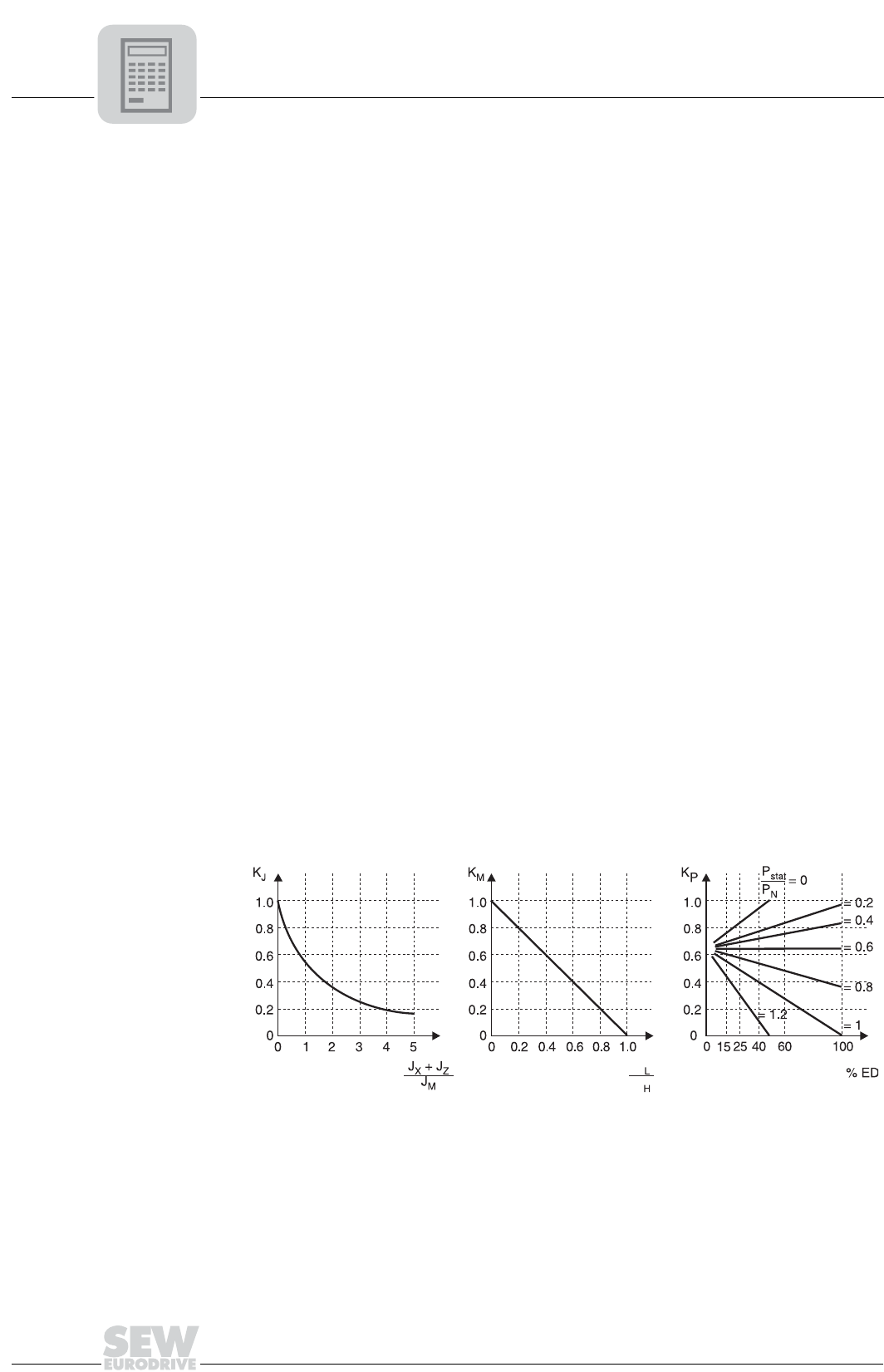Technical data

7
96
Manual – Gear Units and Gearmotors
Starting frequency (→ GM, → MM)
Project Planning for AC Motors
7.6 Starting frequency (→ GM, → MM)
A motor is usually rated according to its thermal loading. In many applications the motor
is started only once (S1 = continuous running duty = 100 % cdf). The power demand
calculated from the load torque of the driven machine is the same as the rated motor
power.
High starting
frequency
Many applications call for a high starting frequency at low counter-torque, such as in
travel drives. In this case, it is not the power demand that is the decisive factor in deter-
mining the size of the motor, but rather the number of times the motor has to start up.
Frequent starting means the high starting current flows every time, leading to dispropor-
tionate heating of the motor. The windings become overheated if the heat absorbed is
greater than the heat dissipated by the motor ventilation system. The thermal load ca-
pacity of the motor can be increased by selecting a suitable thermal classification or by
means of forced cooling (→ Sec. "Thermal characteristics" on page 93).
No-load starting
frequency Z
0
SEW-EURODRIVE specifies the permitted starting frequency of a motor as the no-load
starting frequency Z
0
at 50 % cdf. This value indicates the number of times per hour that
the motor can accelerate the mass moment of inertia of its rotor up to speed without
counter-torque at 50 % cdf. If an additional mass moment of inertia has to be accelerat-
ed or if an additional load torque occurs, the starting time of the motor will increase.
Increased current flows during this acceleration time. This means the motor is subjected
to increased thermal load and the permitted starting frequency is reduced.
Permitted
starting
frequency of the
motor
You can determine the permitted starting frequency Z of the motor in cycles/hour [1/h]
using the following formula:
You can determine the factors K
J
, K
M
and K
P
using the following diagrams:
Z = Z
0
• K
J
• K
M
• K
P
Depending on the additional
moment of inertia
Depending on the counter-torque
at startup
Depending on the static power
and the cyclic duration factor (cdf)
00628BUS
Figure 42: Dependency of the starting frequency
J
X
=
Total of all external mass moments of
inertia in relation to the motor axis
T
H
= Acceleration torque motor
J
Z
= Mass moment of inertia flywheel fan P
stat
=
Power requirement after start-up (static
power)
J
M
= Mass moment of inertia of the motor P
N
= Rated motor power
T
L
= Load-torque during startup %cdf = cyclic duration factor
T
T










